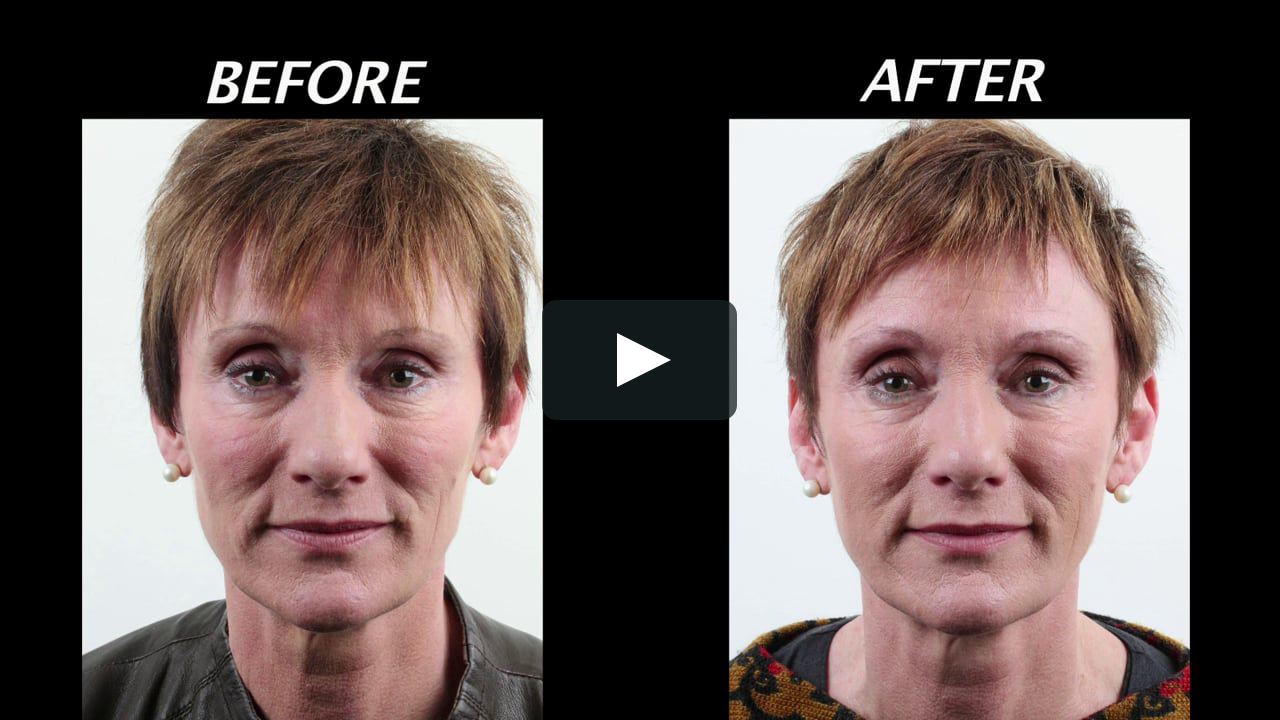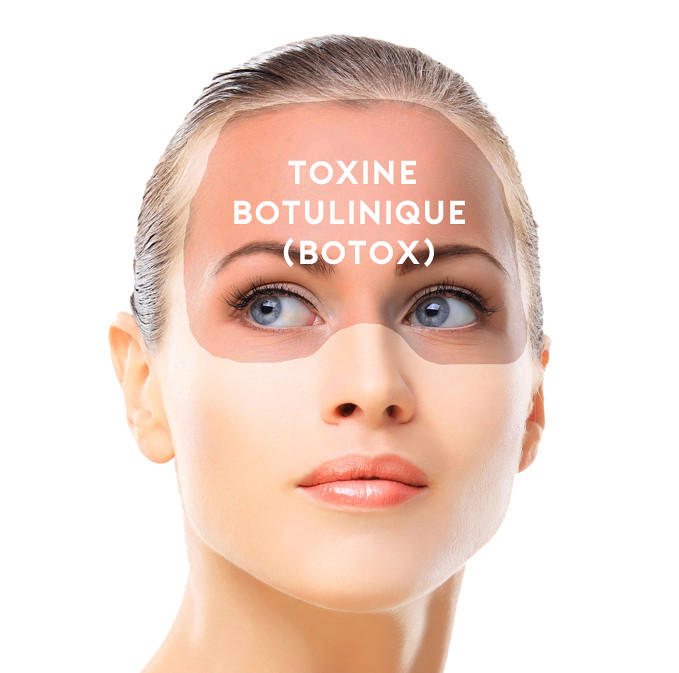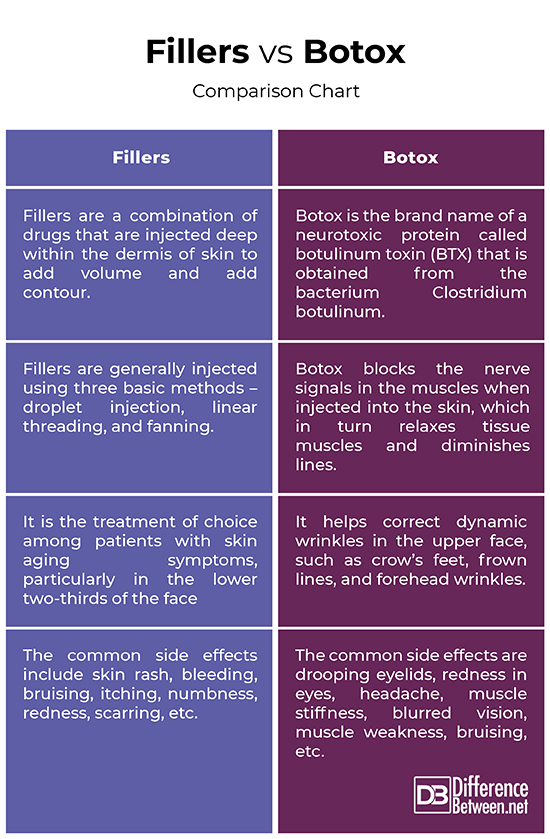Difference Between Fillers and Botox
For over a decade, injectable fillers have provided cosmetic physicians with the tools necessary to treat facial and other skin imperfections with minimal discomfort. Today, numerous opportunities for estheticians are found in specialized clinical settings. Dermal fillers have become one of the widely performed cosmetic procedures, second only to Botox treatments, according to the stats from the American Society for Aesthetic Plastic Surgery. Injectables have become the fastest growing product in the medical spa industry. These are facial fillers, more like drugs that are injected deep within the dermis of skin to make acne, scars, wrinkles and other aging signs less visible.
The most commonly used fillers are collagen and fat, and when injected under the skin, they eliminate wrinkles and other skin imperfections, eventually making the skin smoother and youthful. The combination of an aging population and technological breakthroughs has revolutionized cosmetic aspects of dermatology in the last couple of years. While numerous procedures can be used to treat the aging symptoms, the use of dermal fillers has become one of the most popular cosmetic procedures to improve the appearance of the aging face. But which one is better for you – Botox or Fillers? Let’s see.

What is Fillers?
Dermal fillers are one of the most common cosmetic procedures to fill in or plump up areas of the skin. Facial fillers are a combination of drugs that are injected deep within the dermis of skin to add volume and add contour. They are a versatile tool for facial rejuvenation and are an integral part of aesthetic care. The most common fillers used are the hyaluronic acid fillers such as Perlane, Juvederm, and Belotero, and calcium fillers such as Radiesse. Hyaluronic acid fillers have significant advantages because of their longevity and low incidence of inflammation and swelling. Fillers are generally injected using three basic methods – droplet injection, linear threading, and fanning. Dermal filler procedure is the treatment of choice for patients with skin aging symptoms, particularly in the lower two-thirds of the face.

What is Botox?
Botox is the brand name of a neurotoxic protein called botulinum toxin (BTX) that is obtained from the bacterium Clostridium botulinum. This neurotoxin is the one of the most toxic substances known. It is a neuromuscular-blocking serum which, when injected paralyzes nerve cells on the muscle. Botox is generally injected into the muscles to cause paralysis or restrict movement by blocking neurotransmitters. This relaxes tissue muscles and diminishes lines. This in turn stimulates collagen production. Collagen is a long, fibrous protein found in the bones, skin, muscles and tendons. It adds volume to the face. Collagen production decreases with aging, which causes the development of wrinkles. When Botox is injected into the skin, it allows for the collagen to grow without any effect on its structure due to muscle contractions.
Difference between Fillers and Botox
Injectable
– Both Botox and dermal fillers are the most prominent cosmetic Injectables to treat facial and other skin imperfections with minimal discomfort. Dermal fillers are soft tissue fillers injected deep within the dermis of skin to add volume and add contour.
Fillers are generally injected using three basic methods – droplet injection, linear threading, and fanning. Botox, on the other hand, is the brand name of an extremely hazardous neurotoxic protein called botulinum toxin (BTX) which is obtained from the bacterium Clostridium botulinum. This neurotoxin is the one of the most toxic substances known.
Various Treatments with Fillers and Botox
– Dermal filler cosmetic procedure is the treatment of choice among patients with skin aging symptoms, particularly in the lower two-thirds of the face. They improve facial contours and wrinkles where the skin is sinking or sagging by filling them in, especially the smile lines, cheeks, lips and the marionette lines that appear on either side of the mouth.
Botox treatment helps correct dynamic wrinkles in the upper face, such as crow’s feet, frown lines, and forehead wrinkles. Botox prevents the formation of new wrinkles by relaxing the muscles just below the surface of the skin.
Side-Effects with Fillers and Botox
– Botox blocks the nerve signals in the muscles when injected into the skin, which in turn relaxes tissue muscles and diminishes lines. But it has side effects which include drooping eyelids, redness in eyes, headache, muscle stiffness, blurred vision, muscle weakness, tiredness, bruising, etc. The Botox injections are administered by administered by certified healthcare providers and licensed medical professionals.
The common risks with dermal fillers are skin rash, bleeding, bruising, itching, numbness, redness, scarring, or other allergic reactions such as flu, hives, and so on.
Fillers vs. Botox: Comparison Chart

Summary of Fillers vs. Botox
Both Botox and dermal fillers are the most commonly used cosmetic procedures to treat facial and other skin imperfections with minimal discomfort. Botox is the first botulinum toxin marketed for clinical use. Today, Botox is the most widely used of botulinum toxins with over 80% of the US market. While numerous procedures can be used to treat the aging symptoms, the use of dermal fillers has become one of the most popular cosmetic procedures to improve the appearance of the aging face, second only to Botox treatments. Besides, both are a versatile tool for facial rejuvenation.
- Difference Between Caucus and Primary - June 18, 2024
- Difference Between PPO and POS - May 30, 2024
- Difference Between RFID and NFC - May 28, 2024
Search DifferenceBetween.net :
Leave a Response
References :
[0]Draelos, Zoe Diana. Cosmetic Dermatology: Products and Procedures. Hoboken, New Jersey: John Wiley & Sons, 2011. Print
[1]May, Suellen. Botox® and Other Cosmetic Drugs. New York, United States: Infobase Publishing, 2009. Print
[2]Gerson, Joel, et al. Milady Standard Esthetics: Fundamentals. Boston, Massachusetts: Cengage Learning, 2012. Print
[3]Jones, Derek H. and Arthur Swift. Injectable Fillers: Facial Shaping and Contouring. Hoboken, New Jersey: John Wiley & Sons, 2019. Print
[4]Small, Rebecca and Dalano Hoang. A Practical Guide to Dermal Filler Procedures. Philadelphia, Pennsylvania: Lippincott Williams & Wilkins, 2012. Print
[5]Jabbari, Bahman. Botulinum Toxin Treatment: What Everyone Should Know. Berlin, Germany: Springer, 2018. Print
[6]Image credit: https://i.vimeocdn.com/filter/overlay?src0=https%3A%2F%2Fi.vimeocdn.com%2Fvideo%2F473660409_1280x720.jpg&src1=https%3A%2F%2Ff.vimeocdn.com%2Fimages_v6%2Fshare%2Fplay_icon_overlay.png
[7]Image credit: https://live.staticflickr.com/4238/34841624153_0116db6711_b.jpg
